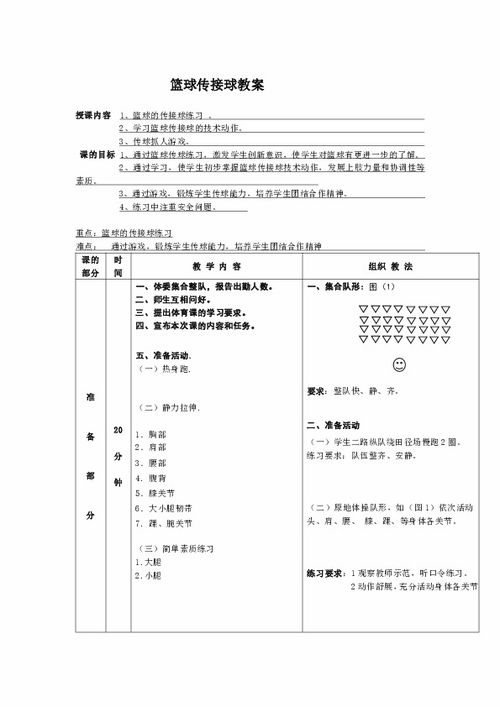小学体育教案格式图片
Title: Elementary School Physical Education Lesson Plan Format
Creating an effective physical education lesson plan for elementary school students is crucial for promoting physical activity, developing motor skills, and fostering a positive attitude towards exercise. Here's a structured format you can follow:
I. Lesson Title:
Choose a descriptive and engaging title that reflects the main focus of the lesson, such as "Introduction to Soccer Skills" or "Fitness Fun: Jump Rope Basics."

II. Objective:
Clearly state the lesson's objectives, indicating what students will learn and achieve by the end of the session. For example:
"By the end of the lesson, students will be able to demonstrate basic dribbling and passing skills in soccer."
"Students will improve cardiovascular fitness and coordination through jump rope exercises."
III. Grade Level:
Specify the grade level or age group for which the lesson is designed, ensuring activities are developmentally appropriate.
IV. Materials Needed:
List all equipment and materials required for the lesson. This may include sports equipment, cones, markers, safety gear, etc.
V. Warmup:
Include a brief warmup activity to prepare students physically and mentally for the lesson. This can consist of dynamic stretches, jogging, or a fun game related to the lesson theme.
VI. Main Activities:
Outline the main activities planned for the lesson, ensuring they align with the stated objectives. Provide clear instructions for each activity, including rules and safety guidelines. Activities should be engaging, inclusive, and allow for skill progression.
Activity 1:
Introduction to basic skills (e.g., dribbling, passing)
Activity 2:
Skill practice drills (e.g., relay races, skill stations)
Activity 3:
Modified game or scrimmage (e.g., smallsided soccer game, modified rules to accommodate skill levels)VII. Cooldown:
Incorporate a cooldown period to gradually lower heart rate and stretch major muscle groups. This can include static stretches and relaxation exercises.
VIII. Assessment:
Consider how you will assess student learning and progress during the lesson. This could involve informal observation, skill demonstrations, or miniassessments incorporated into activities.
IX. Modifications and Adaptations:
Provide suggestions for modifying activities to accommodate students with different abilities or needs. Include options for increasing or decreasing difficulty as necessary.
X. Safety Considerations:
Emphasize safety guidelines throughout the lesson plan, including proper equipment use, hydration, and injury prevention techniques.
XI. Closure:
Conclude the lesson with a brief summary of key concepts covered and encourage students to reflect on their learning experiences. This can also be an opportunity to preview upcoming lessons or set goals for future sessions.
XII. Reflection:
After the lesson, reflect on its effectiveness and identify areas for improvement. Consider student engagement, skill acquisition, and overall lesson flow.
By following this structured format, you can create engaging and effective physical education lesson plans tailored to the needs of elementary school students. Remember to be flexible and adaptable, catering to the diverse abilities and interests of your students while promoting a love for physical activity and healthy living.


